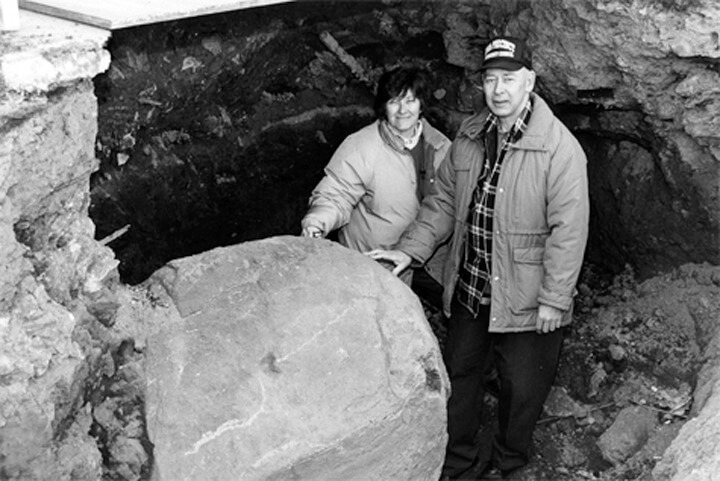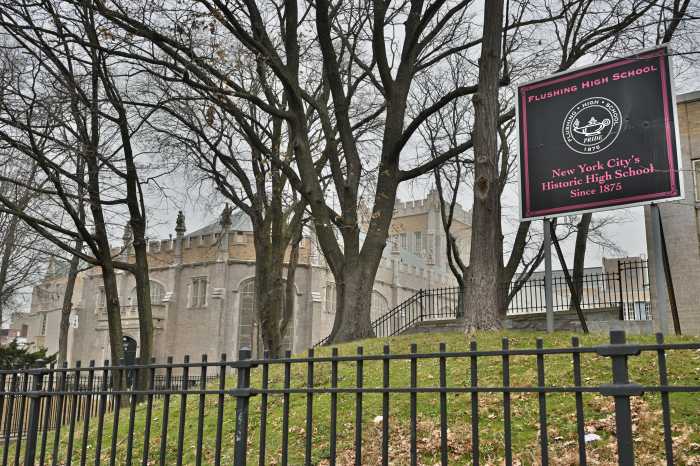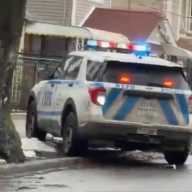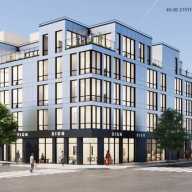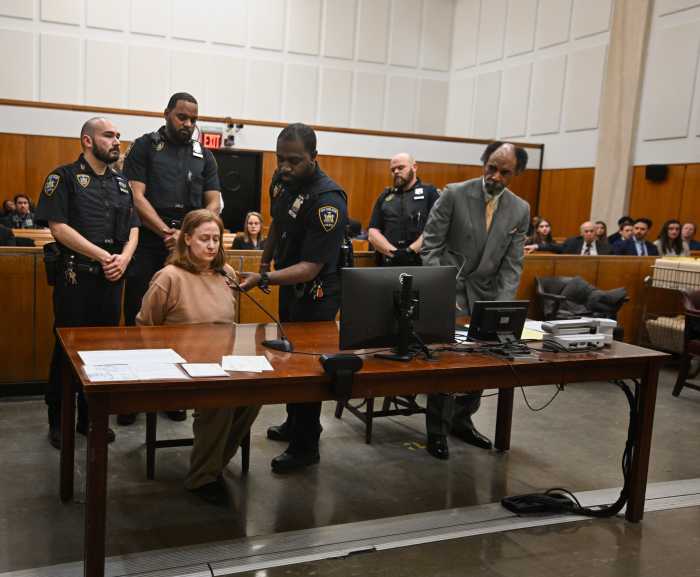Many of The Old Timer’s readers have often asked about the borderline between Brooklyn and Queens, which nowadays has evolved into a question about the border between Ridgewood and Bushwick.
If you look on a map of New York City, Brooklyn and Queens have two natural borders: the Newtown Creek to the north and Jamaica Bay to the south. The landlocked portion of the boundary has shifted time and again — street by street, block by block — through the generations.
Nowhere has this borderline changed more often than in Ridgewood, often for political purposes, and the changes themselves triggered some testy battles between the two counties.
One can find a reminder of such a battle in the form of a boulder dating back to the Ice Age in the rear yard of the Onderdonk House in Ridgewood. Arbitration Rock, as it is called, helped settle decades of border disputes during the colonial period between the towns of Bushwick and Newtown (Ridgewood’s birth name) and, subsequently, Kings and Queens counties.
All parties involved in the border dispute formed the boundary in January 1769 based on the rock’s location about 300 feet northwest of the Onderdonk House, where warehouses north of Flushing Avenue now stand. For decades thereafter, the border based on Arbitration Rock defined many property disputes among nearby owners, but the boulder’s topographical importance was diminished in 1898 after Brooklyn and Queens became part of New York City.
In 1925, the Brooklyn-Queens border changed again because the line, as it was in the middle of city blocks in the still-developing area, now ran through entire buildings, complicating real estate tax assessments and the formation of electoral districts.
The revised border, starting from the Newtown Creek and going south, crossed Metropolitan Avenue and ran down Onderdonk Avenue, then along the Long Island Rail Road’s Bushwick branch and southeast on Seneca Avenue to Flushing Avenue.
Continuing in a south to southwesterly fashion, the border then ran through the middle of Flushing Avenue to Cypress Avenue; Cypress Avenue to Menahan Street; Menahan Street to St. Nicholas Avenue; St. Nicholas Avenue to Gates Avenue; Gates Avenue to Wyckoff Avenue; Wyckoff Avenue to Eldert Street; Eldert Street to Irving Avenue; and Irving Avenue to Most Holy Trinity Cemetery and the Cemetery of the Evergreens. The border was woven between the many cemeteries near Highland Park before reaching Cypress Hills and Woodhaven.
Because of this change, approximately 2,543 people who formerly resided in Queens were shifted into Brooklyn, and 135 people who formerly resided in Brooklyn were shifted into Queens.
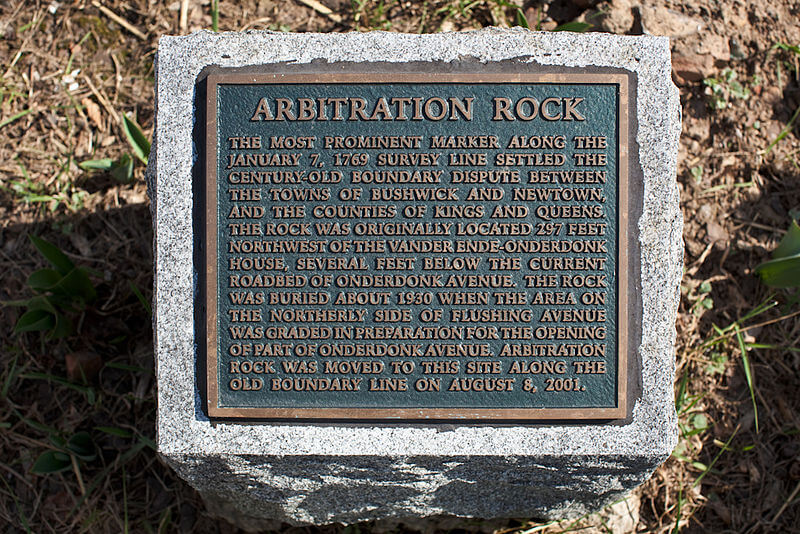
It was a relatively painless transformation, and Arbitration Rock would become an afterthought for many decades. It was actually buried in 1930 below Onderdonk Avenue as part of the road’s reconstruction.
Toward the end of the 20th century, historians’ interest in the rock’s locations were piqued, and after a seven-year hunt, the boulder was located and unearthed from Onderdonk Avenue.
Ironically, that triggered another battle regarding where the big rock would be placed. Then-Borough President Claire Shulman initially wanted Arbitration Rock placed near Kew Gardens, the seat of Queens’ government; historians and Brooklynites, however, wanted the rock at the Onderdonk House, closer to its original location.
After much — for lack of a better term, arbitration — the parties agreed to place Arbitration Rock on the Onderdonk House grounds in 2001. It stands there today as a reminder to future generations of its importance in our neighborhood’s history and borderline.
Reprinted from the Aug. 27, 2015, issue of the Ridgewood Times.
* * *
If you have any memories and photos that you’d like to share about “Our Neighborhood:The Way it Was,” write to The Old Timer, c/o Ridgewood Times, 62-70 Fresh Pond Rd., Ridgewood, NY 11385, or send an email to editorial@ridgewoodtimes.com. All mailed pictures will be carefully returned upon request.

